Flagship Waterways aims to bring as many people together to look after Victoria’s rivers. This includes the Cann River in far East Victoria.
The Cann River has seen a lot of change since the 1800’s. Historically, the fertile floodplains were cleared for agriculture, trees and other vegetation removed, paddocks ploughed, and river banks cleared for access to the water. Floods following these actions commenced a process of bank erosion, channel widening, and stripping of topsoil from the floodplain.
Major flooding in 1919 and 1998 created widespread erosion and deepening of the river channel. The river channel expanded by four times its original width. Following the 1919 flood, management actions were implemented to try to slow and redirect the water, including planting willows, building mesh fences, and even using old car bodies.
Conditions worsened following the 1998 floods, but this is when the natural healing process began with landholders, the local community, and agencies working together, securing their commitment to set the river on a new recovery trajectory.
Rock and timber structures have been introduced to reduce further riverbed deepening. Partnerships with landholders to exclude stock from the river has resulted in the Flagship reach being fully fenced for over 20 years. Native vegetation has been restored along the river to facilitate the natural recovery processes.
Maintenance work continues, including ongoing weed control and revegetation along the river. Moogji Aboriginal Council has worked on many sections, controlling weeds and planting a selection of native vegetation to increase plant diversity. The Cann Valley Landcare Group has worked tirelessly on an area within the Cann River Caravan Park. Their efforts have transformed the river access into a great spot for locals and visitors. If visiting Cann River this holiday season, we hope you enjoy this area and have a fun and safe holiday break.
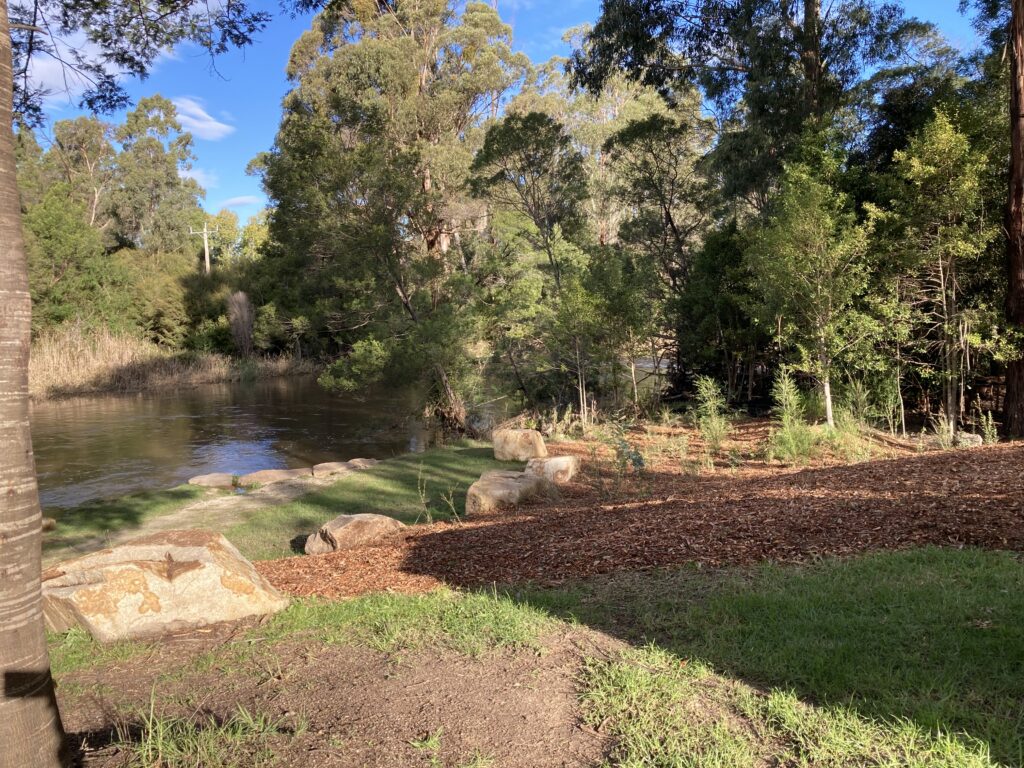
The East Gippsland Catchment Management Authority (CMA) continues to monitor conditions at Lake Tyers estuary with Parks Victoria, Gippsland Ports and the Victorian Fisheries Authority.
East Gippsland CMA, Gippsland Ports and the East Gippsland Shire Council met with the Nowa Nowa community last week to discuss the current estuary conditions. This offered the community an opportunity to ask questions regarding the high levels of the lake that is affecting infrastructure and businesses in their local area.
“The delicate balance of social, cultural, economic, and environmental values are all taken into account when considering an artificial estuary opening” said Bec Hemming, CEO of the East Gippsland CMA.
Last week the East Gippsland CMA undertook water quality monitoring throughout the lake.
“The oxygen levels remain low in Lake Tyers, particularly in the lower parts of the water column. This is a potential major risk to fish. If we were to undertake an artificial estuary opening with the current conditions, it would be highly likely fish would suffer. Rain and flow into the catchment are required to mix the oxygen throughout the water column,” added Bec.
When we have a rain event the East Gippsland CMA, in partnership with other agencies will undertake further water quality monitoring to see if the conditions have improved to consider an artificial estuary opening.
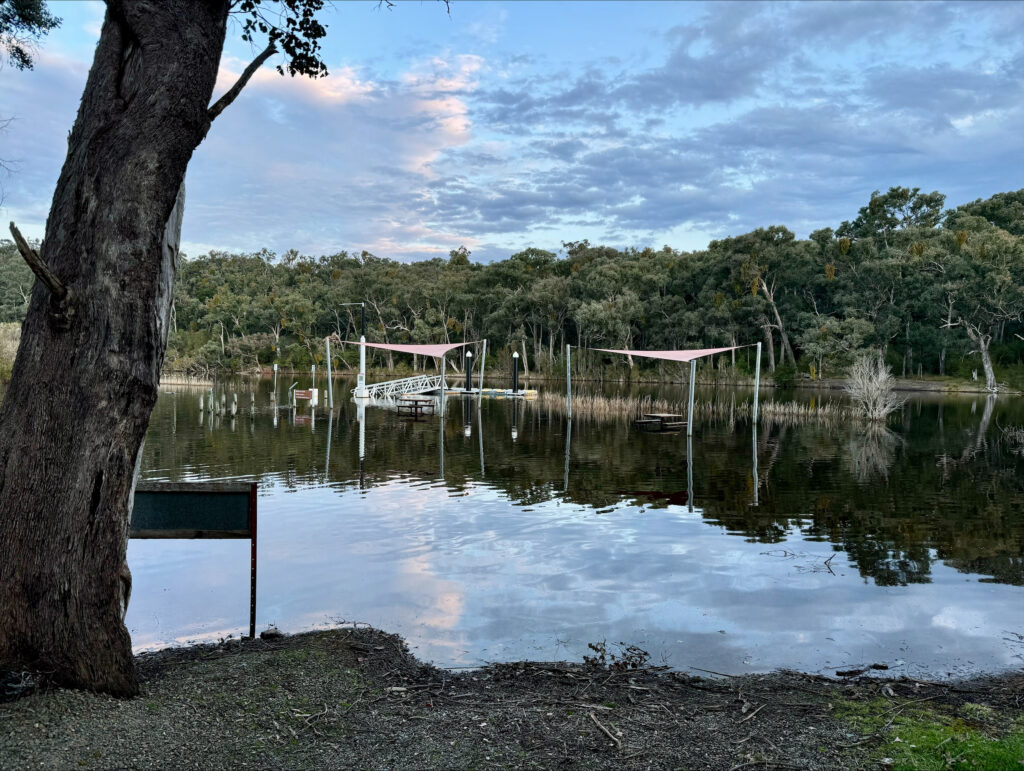
A copy of the by-law is available here. A link to the process for updating this by-law can be found here on Engage Victoria’s website.
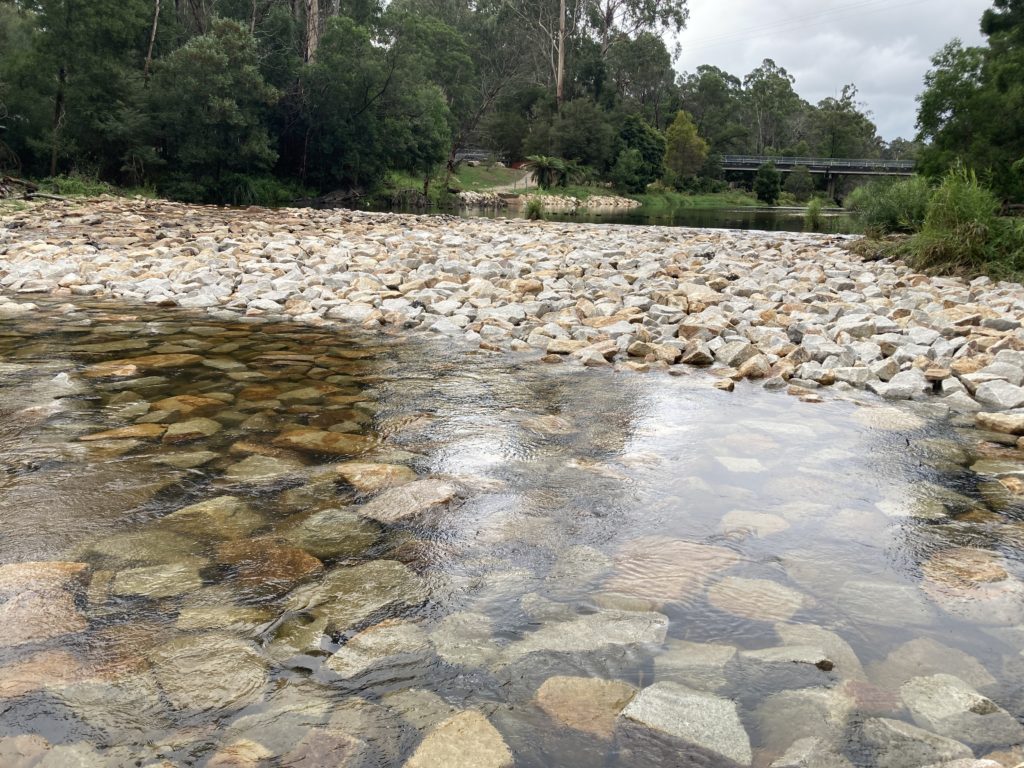
The report on the national Reef Builder program featuring the Gippsland Lakes Shellfish Reef Restoration Project led by The Nature Conservancy is now available (see link below).
The Gippsland Lakes is one of 13 locations across Australia where shellfish reefs are being revived from the brink of extinction.
Not only a win for the environment, but these projects also support native fish and marine species, as well as boost recreational and economic opportunities.
Following the reef’s construction, millions of baby native flat oysters and baby blue mussels have made it their new home, settling beautifully onto the limestone reefs.
This project, in partnership with the Australian Government and supported by the EGCMA, saw amazing community involvement. Nearly 200 locals participated in citizen science activities and community events, making a real difference.
A special shoutout to the Oyster Gardening citizen science program. Dedicated volunteers nurtured and monitored baby native flat oysters, helping them thrive on the new reefs.
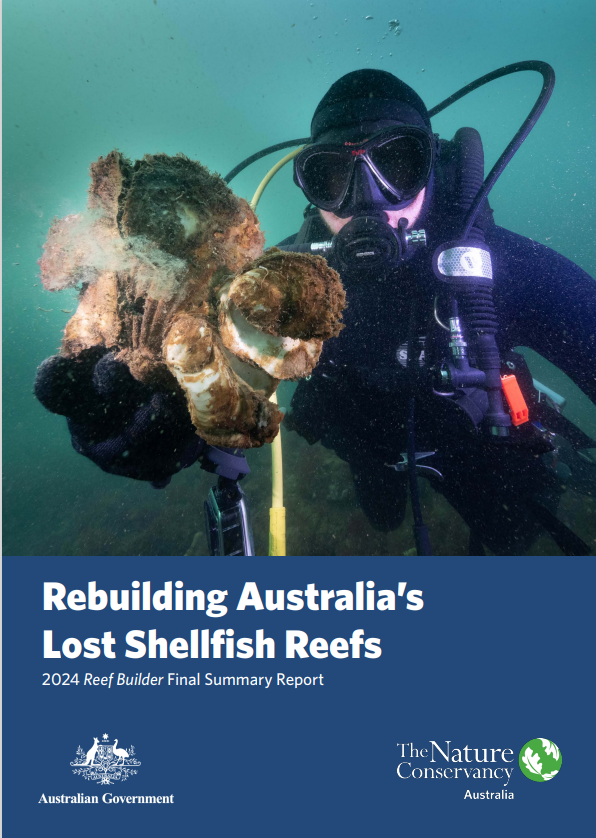
The East Gippsland Catchment Management Authority (CMA) have been monitoring conditions at Lake Tyers estuary with Parks Victoria, Gippsland Ports and the Victorian Fisheries Authority (VFA) pending a potential artificial opening of the estuary.
Lake Tyers estuary has been at a high level of water inundation for some months now and with not enough water flowing through the catchment the estuary has remained closed.
At this stage, it is unlikely the East Gippsland CMA will authorise an artificial estuary opening with the current conditions due to low oxygen levels in the lakes and the potential impacts to black bream breeding cycles.
“We understand the varied impacts of estuaries remaining closed for long periods of time. It is a delicate balance of social, cultural, economic, and environmental values to consider and many aspects to assess when considering artificially opening an estuary” said Bec Hemming, CEO of the East Gippsland CMA.
The key risk is that, immediately after an artificial opening the oxygenated surface water layer drains out to sea. This process, termed de-oxygenation, can leave behind water that is low in oxygen in the deeper areas of the estuary or that has drained from the surrounding land. A lack of oxygen is the primary cause of fish deaths. We have been monitoring Lake Tyers estuary and oxygen levels are very low, particularly at the bottom of the lake.
We have seen this in the past with a substantial fish death event some years ago when the Betka estuary was opened illegally causing the oxygen levels to become too low for the fish to survive.
“We understand the frustrations from community members and other organisations whose assets are inundated with water, considering all aspects of artificially opening the Lake Tyers estuary we feel the environmental risk is just too great at this point in time.”
“It is finding that balance that ensures a successful outcome for all. Recent community discussions have highlighted the impacts of sustained high-water levels, improved understanding and created more opportunities to share information.”
The East Gippsland CMA and Parks Victoria have also determined that the impacts to vegetation in areas inundated by high water levels has not been extreme nor out of the normal range from other conditions such as drought, vehicle damage or general aging.
“We will continue to monitor conditions and assess the opportunity for an artificial opening, particularly if a substantial rainfall event is forecast.” Added Bec
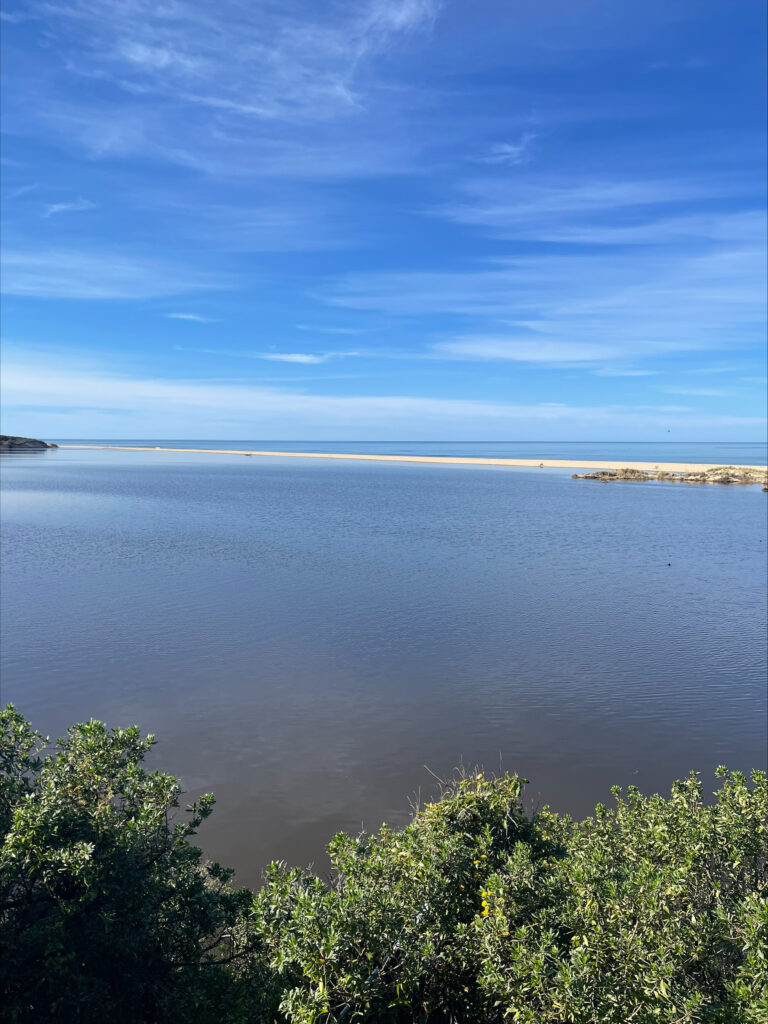
We celebrate Landcare Week by acknowledging East Gippsland’s Landcare groups and their commitment to the environment that has led to well-deserved nominations in the 2024 Victorian Landcare Awards.
The Awards hosted by the Department of Energy, Environment and Climate Action and Landcare Victoria last month, saw representation from our region’s committed volunteers who excelled across various categories.
The Landcare Awards aim to honour individuals, groups and organisations for their outstanding contributions to their local area and community.
We congratulate all of the nominees at these Awards and thank each and every volunteer in East Gippsland for their dedication, commitment and hard work that benefits our region. Included in the nominations were:
• Bairnsdale Joey Scouts who have been busy cleaning up rubbish and weeding to enhance a wetland within the Bairnsdale Education precinct, home to birds, frogs and lots of other wonderful species. They’ve been learning about the migratory Latham’s Snipe and how to identify different bird species.
• Eastwood Landcare Group, a small, diligent, and dedicated team that has been hard at work since 2013, enhancing the local area for residents, school groups and visitors. Their work has provided a haven for multiple species of native birds and animals that call Eastwood home.
• Lakes Entrance Community Landcare Group, a dynamic group operating in the picturesque stretch between Lakes Entrance, Kalimna and Toorloo Arm are proud of their hallmark initiative, the ‘Green Firewalls’ project. It aims to mitigate wildfire risks by establishing natural barriers composed of native, fire-resistant vegetation as well as providing critical habitat for local fauna.
• The Tambo Bluff Landcare Coastcare group has worked tirelessly to protect and enhance a diverse range of habitats. Their workspace includes wetlands, gullies, parklands and the coastline around the Tambo Bluff region of the Gippsland Lakes and their work includes creating conservation programs for schools, weed control, erosion control and native vegetation restoration.
• Jeanette Honey, an active member of the Jarrahmond Landcare Group, has made a significant impact on her local environment. She and her husband, Peter, have created wildlife corridors, restored eroded gullies, and fenced off dams to exclude livestock. Her passion for photography has also contributed to the Group’s efforts with her project, “Birds of Jarrahmond,” serving as a valuable resource for bird enthusiasts and farmers.
• Norm Borg legacy echoes through the Bruthen Landcare Group’s district. His Landcare journey over three decades has included revegetating gullies, creeks, and properties in his community, fuelled by a passion for biodiversity and sustainable living. Projects along the Tambo River near Bruthen were Norm’s focus. Initiatives like the Roadside and Wetland Revegetation project secured $100,000 for combating invasive weeds and planting 17,500 native plants.
• Paul Slater received a commended award in the Australian Government Individual Landcarer Award section. Paul has been a dedicated Landcare member for over two decades planting over 10,000 native plants on both public and private land, many of which he collected the seeds and propagated himself. Paul has been a driving force behind the success of the Snowy West Landcare Group’s nest boxes for Sugar Gliders.
• Tony and Julie Brindley’s Wallagaraugh property is an absolute haven for wildlife and an inspiration for Landcare volunteers. Their passion and decades of hard work has turned the once degraded 440 acres into a spectacular wetland and home for a multitude of flora and fauna. Their breathtaking property has seen a massive weed control program, been planted out with over 80,000 native flora species and had extensive wetland areas constructed.
• Robert Belcher, Chair of the Snowy River Interstate Landcare Committee for 33 years has led large scale projects in the Snowy catchment promoting land health and community interests. Through community forums and social events Robert connects remote communities to broader initiatives. His dedication paves the way for a healthier, more sustainable environment for generations to come.
• Bryce Watts-Parker, a Mallacoota local, was the winner of the NextGen Landcare Award, a much-deserved accolade following his hours of investment into Mallacoota’s community and environmental recovery following the 2019/20 Black Summer bushfires. Working with the Friends of Mallacoota, they created the Mallacoota Endemic Garden, Victoria’s most eastern botanic garden.
Anyone wishing to become involved in Landcare or receive further information about the groups in East Gippsland should contact the East Gippsland Catchment Management Authority.
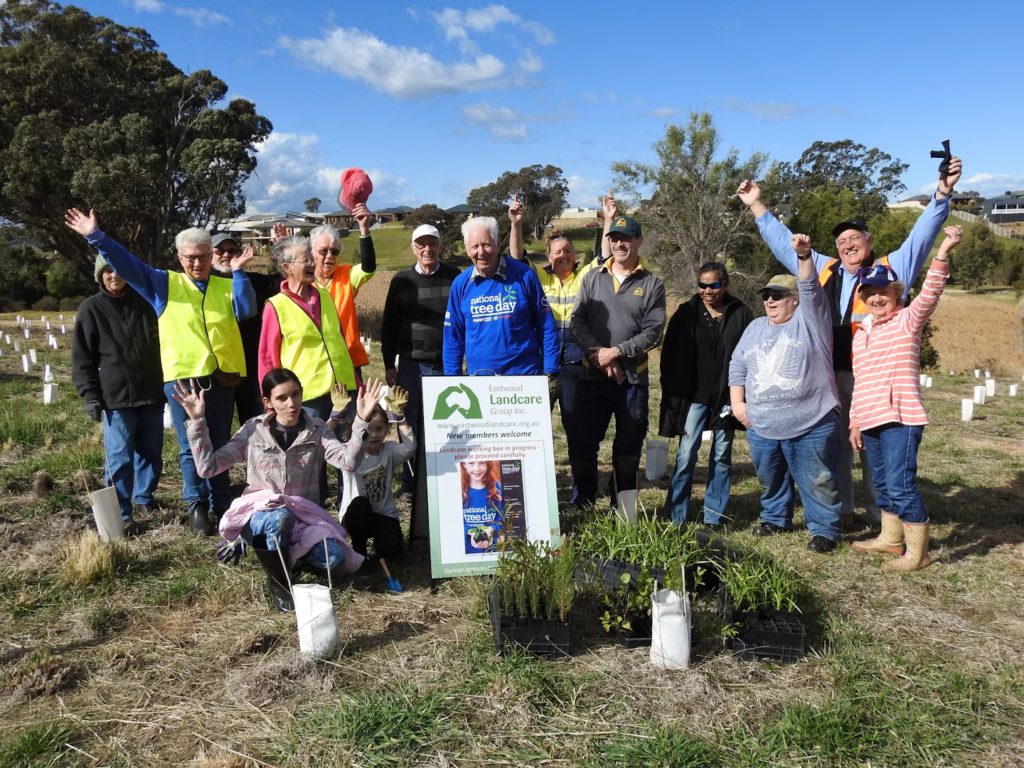
East Gippsland’s Landcare groups and individuals were recognised for their hard work and dedication to the environment by becoming finalists in the 2024 Victorian Landcare Awards.
The ceremony, hosted by the Department of Energy, Environment and Climate Action and Landcare Victoria on Thursday, 18 July, in Melbourne, saw representation from our region’s committed volunteers who excelled across various categories securing both a win and a commended award.
Bryce Watts-Parker, a Mallacoota local, was the winner of the NextGen Landcare Award, a much-deserved accolade following his hours of investment into Mallacoota’s community and environmental recovery following the 2019/20 Black Summer bushfires.
Despite his own and his families’ losses due to the bushfires Bryce took on a volunteer role alongside other community members to lead the local recovery association. The youngest member of the Mallacoota and District Recovery Association Bryce represented the group as the media and environmental recovery go-to person.
“Bryce has shown a passion for his local community and the environment that deserves recognition, and we have been very fortunate to have him join the East Gippsland Catchment Management Authority as a valued staff member,” said Bec Hemming, East Gippsland Catchment Management Authority’s CEO.
The Mallacoota Endemic Garden, Victoria’s smallest and eastern most botanic garden, has been one of Bryce’s favourite endeavours. The garden, situated near the Mallacoota foreshore, features over 150 species of native flora unique to the local region. Over 50 of the species are rare, threatened or endangered and included in the garden is the endangered Betka bottlebrush (Callistemon kenmorrisonii) and Gippsland banksia (Banksia croajingolensis) also known as Shipwreck banksia.
Bryce has a special affection for the banksia. He has been involved in monitoring and assisting scientific research activities on the species and has witnessed it flourish in the four years since the devastating fires.
The Landcare Awards aim to honour individuals, groups and organisations for their outstanding contributions to their local area and community.
“We congratulate all of the winners and finalists at these Awards and thank each and every volunteer in East Gippsland for their dedication, commitment and hard work that benefits our region and all of us who are lucky to call it home,” added Bec.

The East Gippsland Catchment Management Authority (CMA) has been discussing estuary management with the community, highlighted by recent drop-in sessions to discuss the recent update to the Estuary Management Protocols.
The drop-in sessions were well represented with community members keen to discuss these updates as well as voice their concerns about impacts to individual’s properties, businesses and access to public recreational activities when estuaries remain closed and water levels increase.
Some of the risks involved with estuary openings and findings from recent trend analysis’ of some of East Gippsland’s estuaries including Mallacoota Inlet, Sydenham Inlet, the mouth of the Snowy River and Lake Tyers were highlighted at the drop-in sessions.
“We understand the varied impacts of estuaries remaining closed for long periods of time. It is a delicate balance of social, cultural, economic and environmental values to consider and many aspects to assess when considering artificially opening an estuary” said Bec Hemming, CEO of the East Gippsland CMA.
“It is finding that balance that ensures a successful outcome for all. The recent community discussions have highlighted the impacts of sustained high water levels, improved understanding and created more opportunities to share information” added Bec.
As part of the Australian and Victorian Government funded Victorian Estuary Resilience and Hazard Reduction project, the CMA is implementing a series of projects to build on the knowledge of East Gippsland’s estuaries to assist with future management and decision making.
In partnership with East Gippsland Shire Council, Gippsland Ports and Parks Victoria this project includes a trend analysis of 30 years of historic data, installation of cameras to collect visual data of the estuary opening trends and the installation of height gauges in the estuaries to monitor water levels remotely.
Community members will be encouraged to take part in a citizen science program, Estuary Watch, that assists with collection of water quality and condition data to provide valuable information for future estuary management decisions.
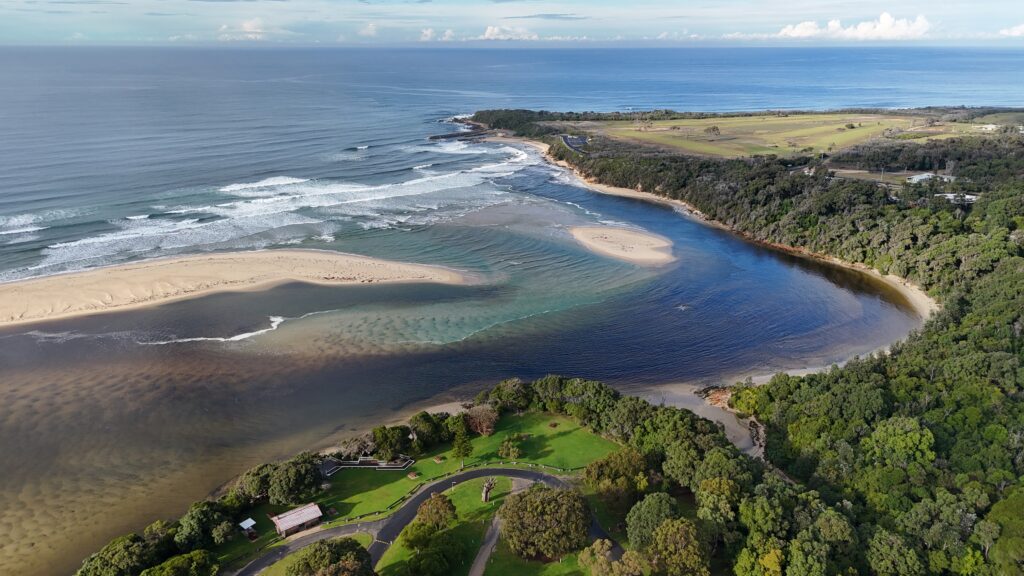
Lindenow South Primary School students rolled up their sleeves, donned their gloves and planted plants for platypus along the banks of the Mitchell River.
The East Gippsland Catchment Management Authority (CMA) has recently placed a series of instream wood structures in the Mitchell River near Wuk Wuk. These structures will provide many functions that aim to benefit platypus populations by providing food and shelter.
Funding for this project, provided by the Victorian Government, is to help highlight the conversation status of platypus in Victoria, particularly in locations likely to provide refuge for the species under a changing climate.
Prior to site selections, eDNA sampling was conducted to confirm the presence of platypus in this section of the Mitchell River.
“This was important to ensure that the habitat was being placed in a location where the species already exists.” Said Bec Hemming, East Gippsland CMA’s CEO
“The enhanced habitat will provide support for this existing population”.
The students from Lindenow South Primary School have been researching platypus, and there isn’t much they don’t know about the species they are helping to protect.
Following a presentation by Wildlife Unlimited to enhance their already strong knowledge of the species, sporting gumboots, they marched on down to the riverbanks to plant native plants just above the newly installed habitat structures.
Once this vegetation is established, it will complement the habitat structures by providing a whole range of benefits. Some of these benefits include reducing sediment runoff into the river, improving water quality, providing habitat for terrestrial animals, food for aquatic animals, and shade for the water, which helps control water temperature during the hotter months.
This hands-on educational experience for the students not only enriches their understanding of platypus but also ensures a safer and more inviting environment for one of nature’s unique creatures.
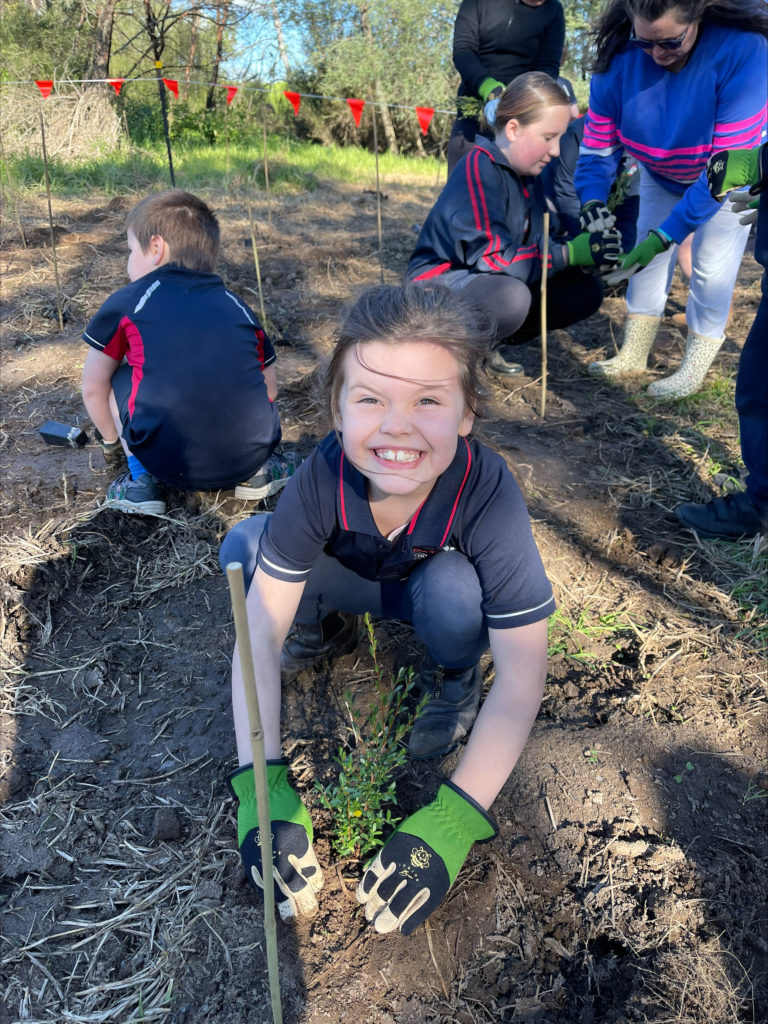

In a remarkable display of environmental stewardship, local students recently planted over 700 native plants.
The cool and wet weather couldn’t dampen the enthusiasm Gippsland Grammar junior students had in completing their environmental project which forms part of a three year multi partner project along the lower Mitchell River.
Gippsland Grammar and partners Gunaikurnai Land and Waters Aboriginal Corporation (GLaWAC), Bairnsdale Urban Landcare Group, Eastwood Landcare Group and the East Gippsland Shire Council contributed to many environmental activities throughout the life of this project.
These initiatives focussed on improving community access and assets, incorporating Traditional Owner values and priorities, improving habitat for native species and wetland restoration along the highly popular area of the Mitchell River from the Lind Bridge to the Highway Bridge.
“The hard work and commitment from not only this school but the community groups that work tirelessly to ensure our rivers remain healthy for generations to come is to be applauded.”, said East Gippsland Catchment Management’s CEO, Bec Hemming.
“The students will be able to keep a good eye on their work as the plants mature and grow, and they will be proud of their environmental contribution to their local area.”
These projects are funded as part of the Victorian Government’s $248 million investment over four years (2020-24) into improving the health of waterways and catchments in regional Victoria.



